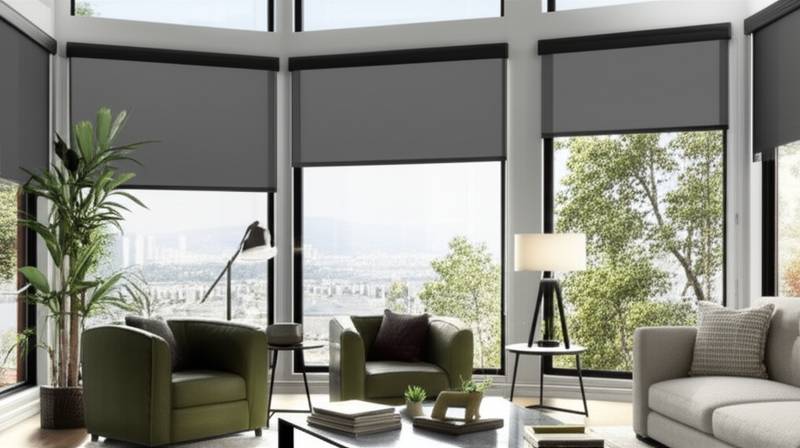How Smart Blinds Track Sunlight to Save $400 Annually on Energy Bills
Smart homes evolve from optional features to essential components of efficient living. Windows represent a key area for improvement, where smart blinds that track sunlight deliver significant benefits. These automated systems go beyond basic operation. They monitor environmental conditions, respond to natural light patterns, and help average households reduce energy expenses by approximately $400 each year.
The Energy Loss Through Conventional Windows
Windows often serve as overlooked sources of energy inefficiency. Sunlight entering untreated glass raises indoor temperatures rapidly, which compels air conditioning units to operate more frequently. During winter, heat escapes through the same surfaces, increasing heating requirements. Manual blinds or curtains demand constant human intervention, yet they frequently remain static as sunlight positions change.
Such oversight contributes substantially to overall household energy consumption. Research from energy organizations indicates that advanced window treatments can decrease heating and cooling losses by as much as 30 percent. For typical homes, this reduction equates to meaningful financial relief, influenced by regional climate and property dimensions.
Mechanisms Behind Sunlight-Tracking Functionality
These blinds incorporate sensors or link to central smart hubs to gauge light intensity and solar angles continuously. Direct sunlight prompts the shades to descend, mitigating glare and thermal buildup. Shifts in weather or solar paths trigger further adjustments to maintain optimal conditions. Integration with thermostats enables coordinated responses across the residence.
Certain models leverage location-based data to anticipate daily light cycles according to the home's coordinates. Compatibility with voice controls or mobile applications allows users to customize operations verbally or through interfaces. The outcome includes enhanced comfort, lower energy demands, and minimal routine maintenance.
Automation for Daily Comfort
Consider mornings where blinds rise gradually to admit soft natural illumination aligned with personal routines. In intense midday periods, they descend to preserve cooler interiors. As evening approaches, partial openings capture fading light without excess heat. This seamless operation optimizes energy while aligning with individual habits, eliminating the need for frequent manual tweaks.
Remote workers benefit from diminished screen reflections and steady illumination levels. Zone-specific programming ensures varied settings, such as brighter spaces for productivity alongside dimmer areas for rest. Families appreciate the hands-free reliability that supports diverse schedules.
Practical Implementations from Leading Brands
Established manufacturers offer reliable options compatible with major smart ecosystems. Lutron Serena Shades link to voice systems, temperature controls, and activity detectors for comprehensive automation. IKEA Fyrtur provides budget-conscious alternatives with remote access and timed sequences. Eve MotionBlinds emphasize direct light response over schedule dependency alone.
Installation typically involves retrofitting existing frames, avoiding extensive modifications. This ease of adoption appeals to those seeking upgrades without structural alterations. Widespread availability accelerates integration into varied home setups.
Breaking Down the $400 Annual Savings
The projected $400 reduction stems from diminished reliance on climate control systems. Summer applications block incoming solar radiation, easing air conditioner loads. Winter configurations admit daytime warmth passively, then seal against nocturnal losses.
This precision replicates vigilant manual oversight but executes it flawlessly around the clock. Consistent performance alleviates wear on heating and cooling equipment, potentially cutting repair expenses over time. Initial costs yield returns through both short-term bill reductions and extended system durability.
Integrating Sustainability with Aesthetic Appeal
Beyond financial gains, these blinds support eco-friendly practices by curbing total power usage. Select materials feature infrared-reflective properties or recycled compositions to enhance thermal barriers. Contemporary designs in neutral tones and textures blend into diverse decors, functioning as functional art rather than obtrusive devices.
Battery-operated variants suit rental properties, requiring no electrical alterations. Units with integrated solar charging sustain operation for extended periods, sometimes indefinitely under normal light exposure. Such innovations broaden accessibility for urban and temporary residences.
Overcoming Adoption Challenges
Upfront pricing deters some prospective buyers, though market trends show declining costs. Unified protocols like Matter facilitate interoperability among devices, streamlining configurations. Advancements in wireless technology simplify professional or self-installation processes.
Users who invest often highlight the rapid payback from convenience and efficiency. Minimal ongoing adjustments follow initial setup, yielding persistent benefits. Pairing with existing smart devices amplifies overall resource management.
Advance Your Home Efficiency with Intelligent Window Control
Sunlight-tracking smart blinds represent an accessible entry into adaptive home technology. They deliver energy conservation, elevated comfort, and streamlined operations with little disruption to established routines. As adoption grows, these solutions promise to normalize responsive window management alongside other connected features, fostering homes that harmonize with natural rhythms for enduring savings and well-being.
